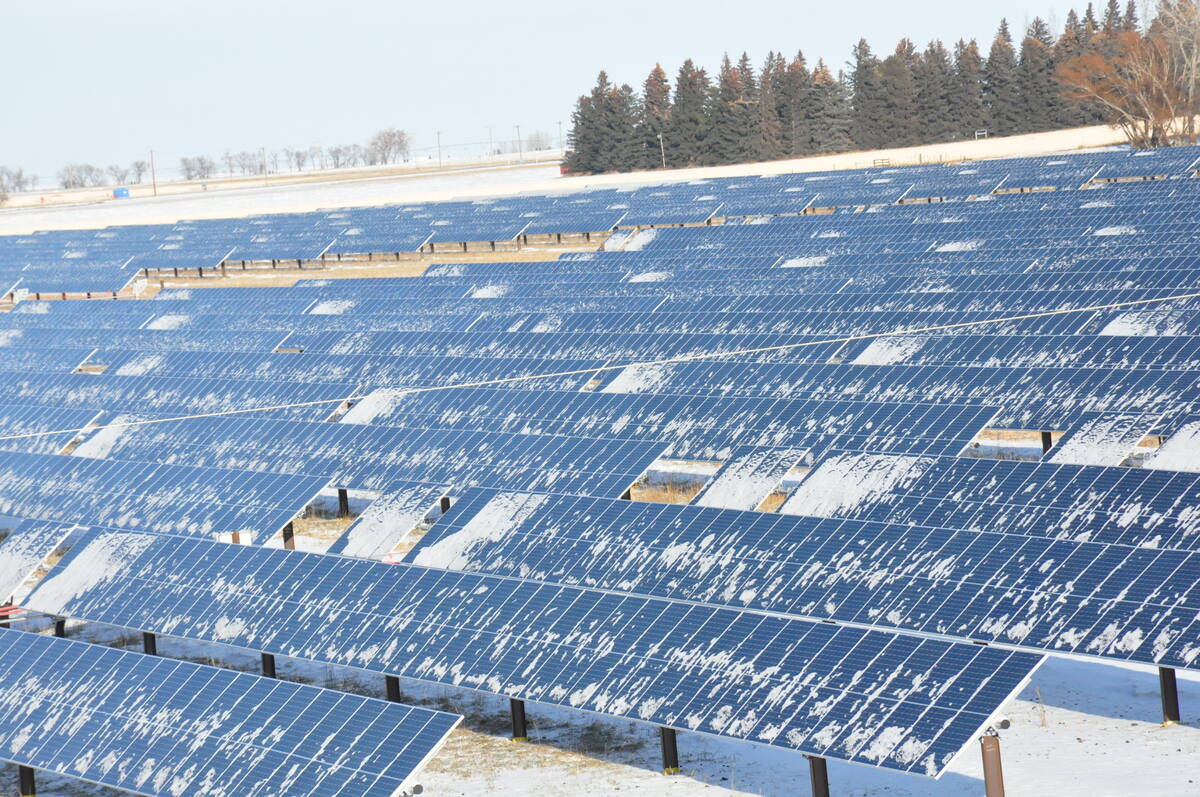When it comes to farm labour, the sector is guilty of shooting itself in the foot.
It’s long been one of the industry’s stated goals to attract talent and grow the workforce, yet at the same time, it’s dragged its feet on every front when it comes to actually making itself a more attractive employer.
We can see evidence of that recently in the federal government’s decision to dramatically loosen the boundaries of the temporary foreign workers program. Among other adjustments they’re doing away with limits on the number of ‘low-wage’ TFWs employers can bring in and overall increasing the number of workers they’re targeting to bring in this year.
Read Also

Why agriculture is Canada’s energy ace
Why isn’t agriculture getting more play in Canada’s quest for efficient, renewable energy production? It should be
The pork sector is among those hoping to bring in some of these workers, as reporter Geralyn Wichers writes in her report from the Manitoba Pork Council’s annual general meeting.
But what she also reports is that the pork sector says it wants a path to citizenship for these employees. As a cynical outside observer, I have to wonder why. Because the second that happens, one has to wonder if those newly minted permanent residents on the road to citizenship won’t go find better jobs.
A big part of this is the rules governing farm labour, and the way they’ve been wilfully exploited over the years. Like water finding its level, business can’t seem to help itself but to find the cheapest and lowest common-denominator model.
If we’re taking the pork sector as an example, let’s look at one large and vertically integrated operator that is, by most independent assessment, the largest pork producer in Canada.
To quote that company’s own 2021 annual report, “… adjusted EBITDA was a record $527.1 million… ” EBITDA is, essentially, the company’s net income from operations before taking out ‘interest, taxes, depreciation and amortization.’
This is not a company that is in dire straits, yet its employees are not particularly well paid.
Right now this same company is trying to hire animal care technicians at $16 an hour. Today the province’s minimum wage is $11.95 an hour, set to rise this fall to $12.35 an hour.
Also of note is that, only in the past dozen years, have its primary agriculture operations, been treated any differently than a small farm. Only since 2009 have employees in ‘climate-controlled’ facilities like barns and greenhouses been subject to all of the province’s labour regulations. Things like overtime, holiday pay or a myriad of other worker benefits that workers in virtually any other sector always got.
Also worth noting is the presence of some loopholes. For example, a worker on a vegetable operation who works in the fields during the growing season and a packing facility during the off-season still isn’t covered by all labour law.
Back in 2009, when the regulatory changes were made, the agriculture industry wasn’t happy. One complaint was that it put employees on better footing than family members — conveniently ignoring the whole issue of the benefits of ownership.
And even today, a whole swath of workers in the agriculture sector still don’t have the same rights as most other workers.
It’s time for the sector to accept that times have changed, and being dragged, kicking and screaming, to treat and pay its workers fairly isn’t a sustainable industrial relations model.
Eventually the TFW train is going to run off the tracks. Anyone paying attention can see that it’s already running out of steam. More and more people are coming to view them as a ‘wage suppression’ scheme by business, if you read the comment section of articles that report on them.
And while the industries are very different, the widespread use of TFWs in the food-service industry particularly seems to be increasingly leaving a bad taste in the mouths of Canadians. That’s a problem for you, because it is the TFWs that most citizens see, since few will be in barns or on farms. And it is only the political will of these citizens that allows for this program to exist.
As inflation continues to heat up, housing becomes more difficult to afford, interest rates rise, and life just generally becomes economically harder, expect the pressure to reform or even eliminate this program to grow.
That process might take some time. And it may take an electoral upheaval, since many of the national parties seem to share a consensus on this strategy. But if voters don’t sign on, eventually those parties will change. It will be similar to the Brexit vote in the U.K. or the election of Donald Trump in the U.S.
The agriculture sector needs to at least be aware of this risk, rather than simply again and again taking the easy way out, and calling for more TFWs. Because if it doesn’t plan proactively for it, it will be caught when the winds do change. And recent electoral history suggests that those winds can change quickly.
Essentially the agriculture sector, as of right now, is willingly making itself an unattractive employer. And then complaining bitterly that nobody wants to work for it.
A better strategy will be to make the sector an employer of choice, not last resort, and that will mean extending the same considerations that workers get in virtually every other sector of the Canadian economy.
If it’s not willing to take even that basic step, then it has no one to blame for its woes but itself.















